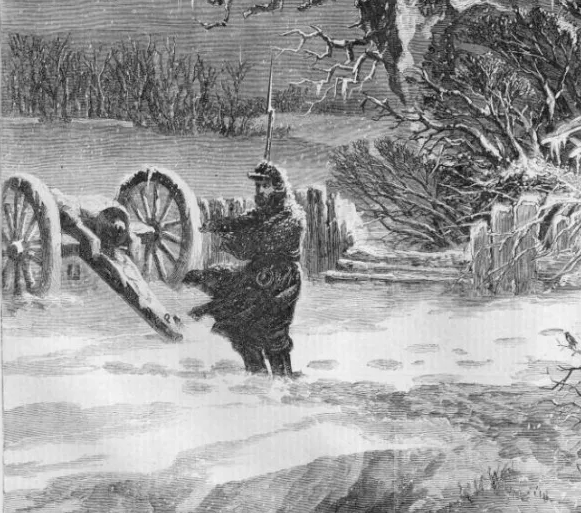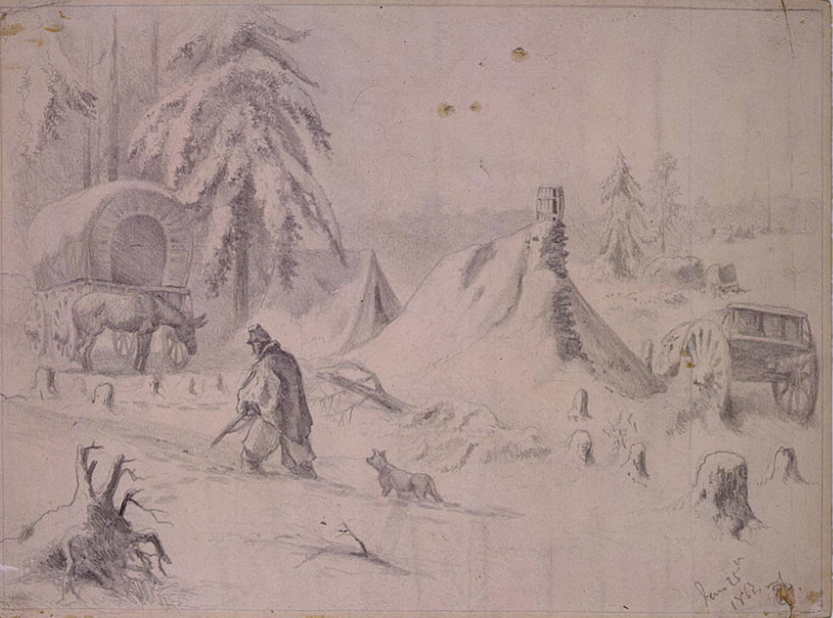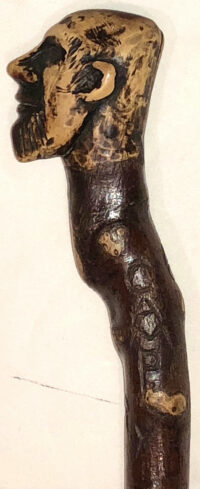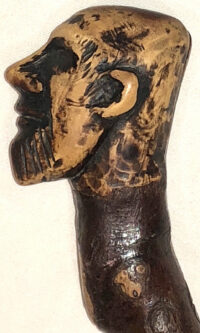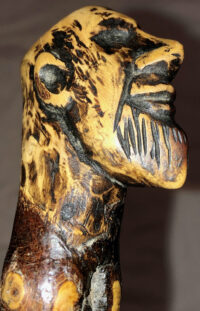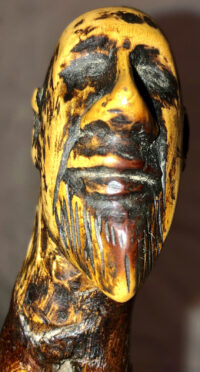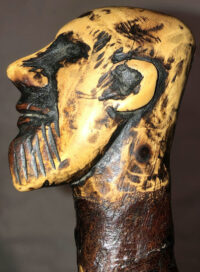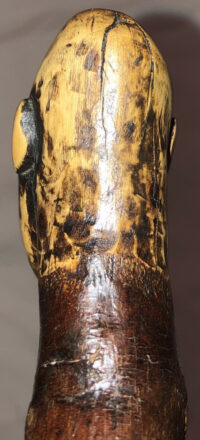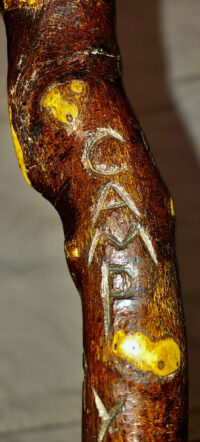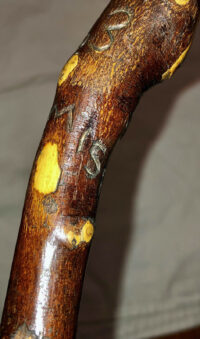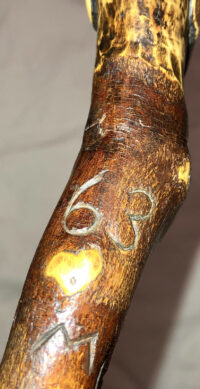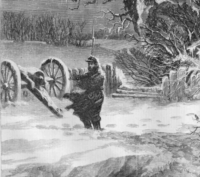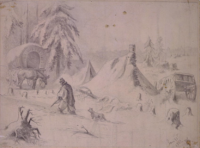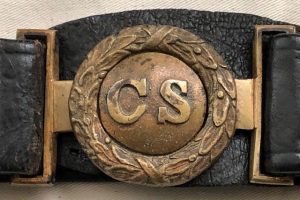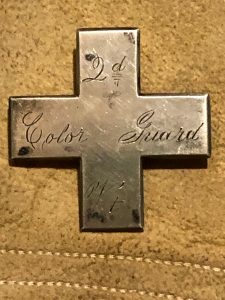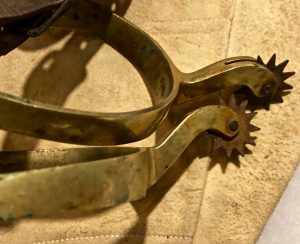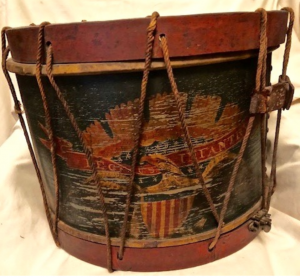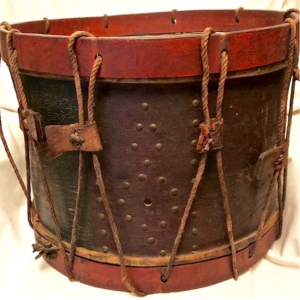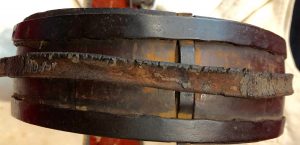Civil War Period Folk Art Carved Figural Cane – Created by a Soldier at “Camp Misery” in 1863
SOLD
Civil War Period Folk Art Carved Figural Cane – Created by a Soldier at “Camp Misery” in 1863 – This wooden (Hickory) cane is a superb piece of mid-19th century, folk art; the palm held area of the cane depicts the well-carved bust of a rather menacing looking man; the tip end of the cane is covered in some form of black paint. The shaft is replete with multiple knots, that have been artfully smoothed; the cane appears to have been shellacked, in the period. Of note are two carvings on the upper section of the shaft: “Camp Misery” and “63”. The reference to “Camp Misery” refers to Camp Butler, a Union Army camp, on the banks of the Rappahannock River, northwest of Fredericksburg, Virginia. During the severe winter of 1862-1863, this site was occupied by many Federal soldiers, who endured extremely harsh conditions; the soldiers were plagued by multiple cases of pneumonia, cholera, smallpox, dysentery, malaria and a host of other disorders, in combination with inadequate clothing and barracks. Because of the austere and poor health conditions, as many as 3-4 soldiers, encamped at Camp Butler, died each day, during the winter of 1862-1863. The horrifically poor conditions and the resultant high mortality rate induced the soldiers at Camp Butler, to call their campsite – “Camp Misery”. This cane, besides representing a well-crafted example of Civil War period folk art, also bespeaks of the fearful conditions that Federal soldiers had to endure during the winter of 1862-1863. The cane remains in excellent condition; it measures approximately 35” in length.
“Camp Misery”
Camp Misery, located off the bank of the Rappahannock River, was a Union Army camp established in 1861. It was originally known as Camp Butler but earned the name Camp Misery because of the horrific winter in 1862 that the soldiers experienced.
Winter 1862
The Winter of 1862 proved to be one of the harshest winters encountered during the Civil War. Camp Butler was plagued pneumonia, cholera, smallpox, dysentery, malaria and other diseases exacerbated by close contact, poor nutrition, and inadequate clothing and housing. Camp Butler also held prisoners, and due to the poor health conditions over 148 prisoners died within two-and-a-half weeks.
The mortality at Camp Butler averaged around 3 to 4 soldiers per day, with the death toll reaching as high as 15 men on some days. According to records kept by a Dr. Reece, a physician in the camp, by June 1862, 336 soldiers had been hospitalized. Because of the high mortality and harsh weather conditions recorded in this particular camp, Camp Butler was dubbed “Camp Misery” by Civil War soldiers and historians.
Excavation
Since 2008, Virginia’s Department of Historic Resources has conducted excavations in hopes of learning more about the condition of life in Camp Butler. However, may be brought to a halt by the planned 2017 construction of a new high school. James Madison University and the Stafford County School System have begun to excavate a street located in Camp Butler looking for clues to Civil War life.

















